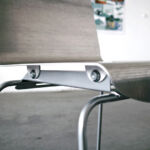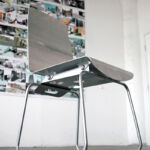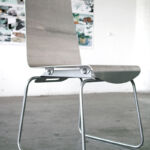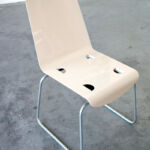Palm Springs Chair: A Versatile and Timeless Furniture Design
Project's Summary
Architecture goes beyond the confines of buildings. The true value of architecture lies in its ability to offer something at various scales and with diverse programs. Classicism, for instance, demonstrated this exemplary quality by successfully operating at scales ranging from doorknobs to entire cities. It could be found in structures as different as bicycle sheds and cathedrals, and even had something to say about seemingly unrelated things like clothing and tableware. Modernism, though perhaps less consistent, also engaged with a wide range of subjects, reflecting the idea that form and function should be congruent. However, modernist architects often avoided decorative opportunities that the classical period embraced, allowing them to showcase their design abilities at multiple scales throughout a building. Despite this difference, the experience of the modern environment has been no less complete than that of the classical period, with furniture playing a crucial role in shaping that experience.
As modern architecture moved towards minimalism, furniture began to take center stage. These objects, with their narrowly defined functions such as sitting, storing, and lighting, were uniquely suited to serve the spirit of functionalism. While modern architecture hid its details in favor of a play of masses and light, furniture stepped forward to demand attention. The best examples of furniture design have become as well known as the buildings that house them. Icons like the Farnsworth House, the Barcelona Chair, the Villa Savoye, and the Chaise Longue a Relage Continu have marched through history, leaving a lasting impact. Just like buildings, furniture can either stand out or blend in, and the best examples manage to strike a balance between the two, rewarding attention without demanding it.
Furniture design, whether it be chairs, tables, or lamps, is acutely sensitive to the divide between novelty and excellence. Unlike building design, furniture is not as restricted by economic and physical constraints, nor is it as burdened by regulatory and contextual demands. However, furniture is intimately related to the human body, which imposes its own set of constraints. This concentration of constraints can either lead to a distilled and refined design or an opportunity for excess. When pursued as a distillation, furniture design often focuses on a salient element that represents the essence of the piece, arranging other elements to highlight and emphasize that essence. On the other hand, when novelty is prioritized, furniture design may prioritize surprise and exuberance, incorporating material innovations or reimagining traditional functional requirements.
Most chair designs, whether innovative or classic, are exercises in tectonics. The problem posed by the chair's program is so minimal that there is little else to inspire the design. New ideas often emerge from novel technologies, turning a piece of furniture into a demonstration of the new tectonic. Alternatively, a piece of furniture may refine an older tectonic, showcasing well-known principles in a new light or emphasizing previously hidden features. The Palm Springs Chair, for example, relies on the tectonics of CNC stamped and folded 10-gauge steel plate. Its profile is achieved through folding and rolling, while the shape of the steel itself is stamped out of a single plate. The chair's construction allows for easy interchangeability of seats of different colors, and the possibility of future attachments such as cup holders or armrests. Despite its name, the Palm Springs Chair is not defined by any particular style or modernist character. Instead, it is intended to be a durable workhorse with exquisite proportions, equally suitable for a lecture or a dining table. The springiness of its steel plate construction allows for both an upright sitting position and a comfortable lounging experience, all while maintaining a sense of stability and lightness.
In conclusion, architecture extends beyond buildings and encompasses various scales and programs. Classicism and modernism have both demonstrated their ability to engage with different subjects and scales, with furniture playing a significant role in shaping the modern environment. Furniture design, whether focused on novelty or excellence, is influenced by the constraints imposed by human interaction and technological advancements. The Palm Springs Chair exemplifies the tectonic exercise involved in chair design and showcases the possibilities of CNC stamped and folded steel plate construction. Its versatility and refined proportions make it a timeless piece suitable for various settings.
Read also about the Fabre Museum: A Fusion of Art and Architecture in Montpellier, France project






